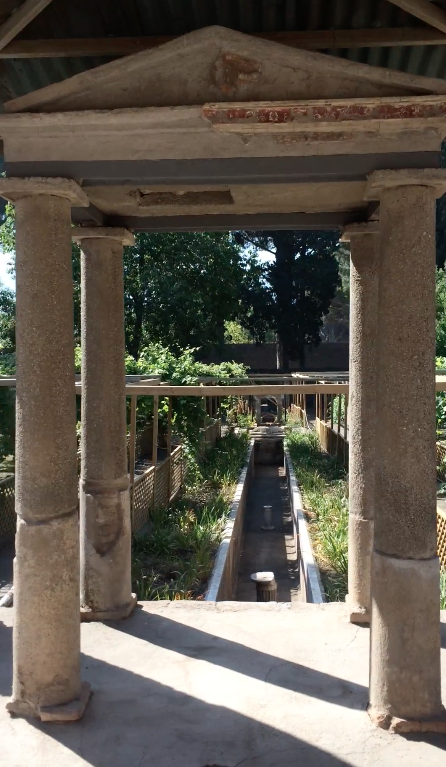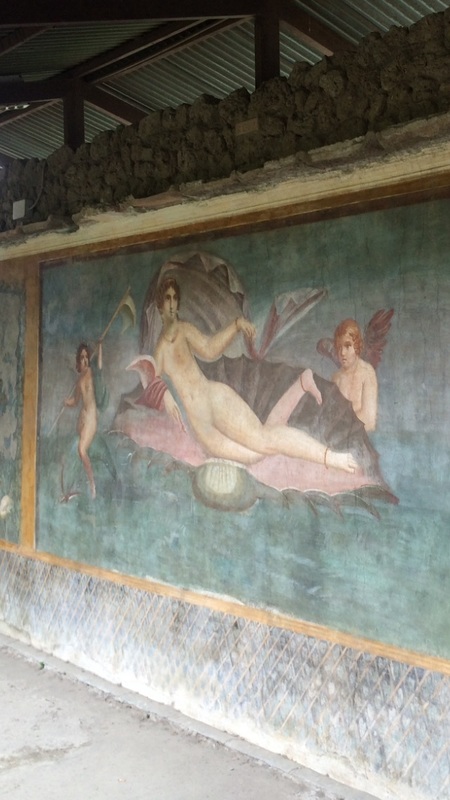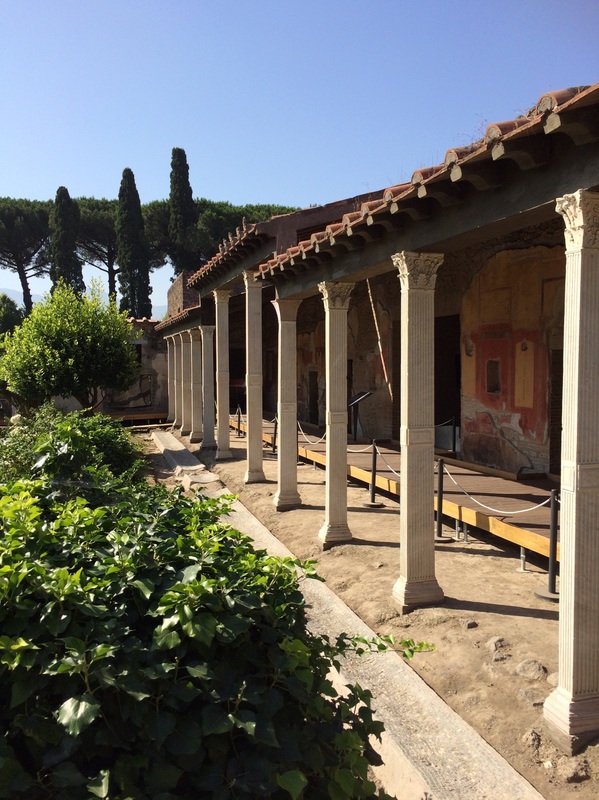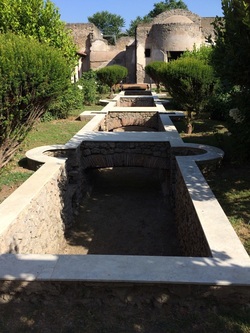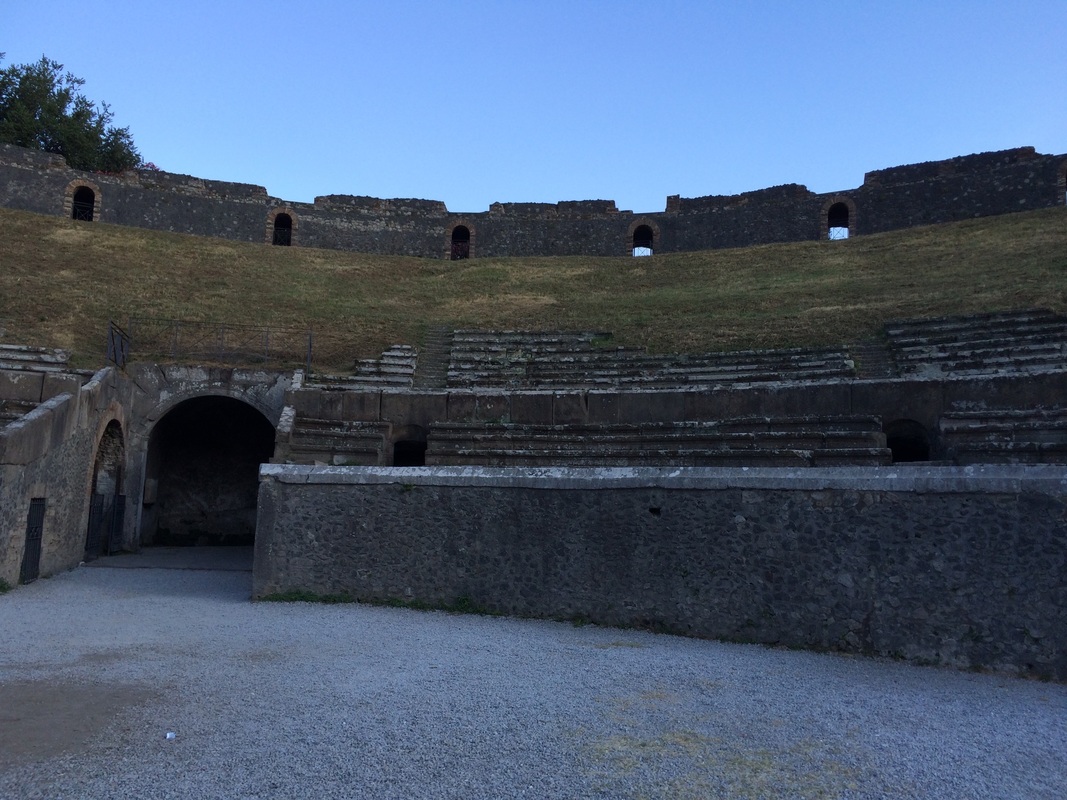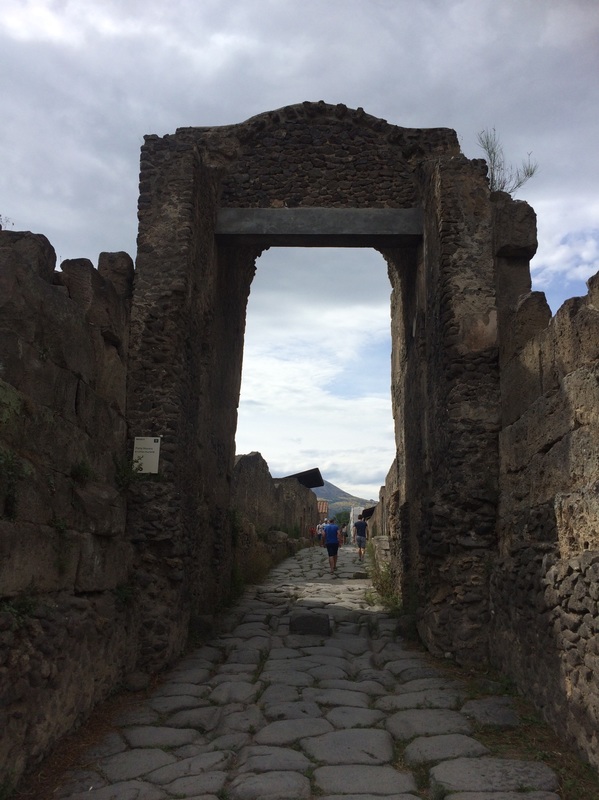The House of Octavius Quartius
This elegant house is said to have had the largest garden in Pompeii and has been replanted with the native plants and trees. Some notable features of the home include a water channel in the garden, a temple to the Egyptian goddess, Isis, and an outdoor dining room. Pompeii: Guide to the Excavations states that the garden was used by the followers of Isis. In addition, the garden would be flooded by means of the water channel to imitate the Nile river.
Map #1 |
House of Venus in the Shell
The painting of Venus in the Shell is located in the back of the peristyle garden. As with typical depictions of Venus, she is naked and recumbent on her shell. She is also attended by Cupids and adorned with jewelry. While this image is preserved, the house itself was damaged by WWII air raids.
Map #2 |
Amphitheater
The amphitheater is considered to be one of the oldest structures, built c. 70 B.C.E. It was said to hold 20,000 spectators both from Pompeii and the surrounding cities according to A Guide to the Pompeii Excavations. Used for gladiatorial battles, the amphitheater was a source of public entertainment. In the summer a shade canopy could be extended over the top of the amphitheater to provide shade. The amphitheater was closed for 10 years when a fight broke out between the citizens of Pompeii and those from Nocera resulting in the death or injury of many.
Map #5 |
Nocera Gate and Walls
This gate allowed for access to the town of Nocera and is located on the south-east portion of Pompeii. Notice how the gate connected to the city walls providing for safety.
Map #9 |
Necropolis of Nocera Gate
The Necropolis of Nocera is one of the most interesting places at the Pompeii site. The Romans were not allowed to bury their dead within the city limits so there is a necropolis outside of several of the city gates. This Necropolis boasts the tomb of Eumachia, who was a priestess of Venus and member of a wealthy Pompeian family. There is also the tomb of the Flavians with cutouts in the stone allowing for the busts of the deceased.
Map #10
Map #10

This work is licensed under a Creative Commons Attribution-NonCommercial-NoDerivatives 4.0 International License.
Proudly powered by Weebly

